10 Dairy Products With More Protein Than a Chicken Breast
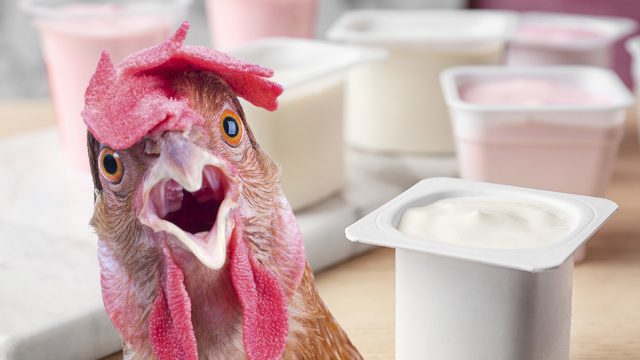
If you want to burn fat and build muscle, protein is key. According to clinical trials, consuming more protein than the recommended dietary allowance not only reduces body weight (BW) but also enhances body composition by decreasing fat mass while preserving fat-free mass (FFM) in both low-calorie and standard-calorie diets. One of the easiest, most versatile sources of lean protein is chicken breast. "One ounce of chicken breast is about 7-8 grams of protein," says Body Network's Resident RDN, The Diet Diva Tara Collingwood. However, a "serving" of chicken breast is usually 3 oz and 21-23 grams of protein. "Unfortunately, there aren't many that are higher than chicken," she maintains. Here are your best options, according to Collingwood.
1 Cup of Cottage Cheese, 24 Grams
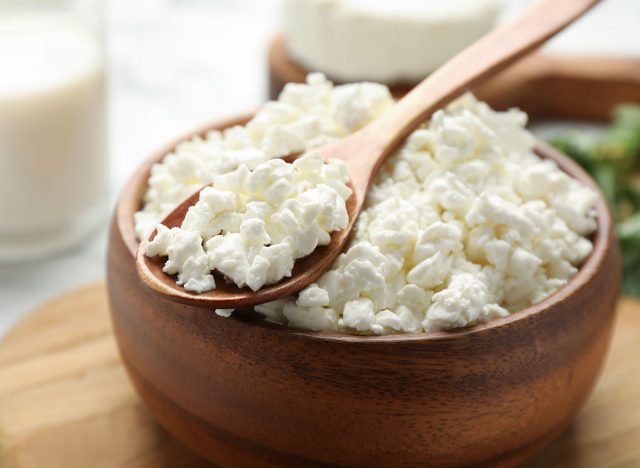
"Cottage cheese is an excellent source of protein and can be really versatile," says Collingwood, MS, RDN, CSSD, LD/N, ACSM-CPT, a Board Certified Sports Dietitian and co-author of the Flat Belly Cookbook for Dummies. "You can eat it on its own—plain or with tomatoes or fruit (savory or sweet) or top onto baked potatoes, salads, or mix into pancake mix, smoothies, and more."
1 Ounce of Cheddar Cheese, 7 Grams
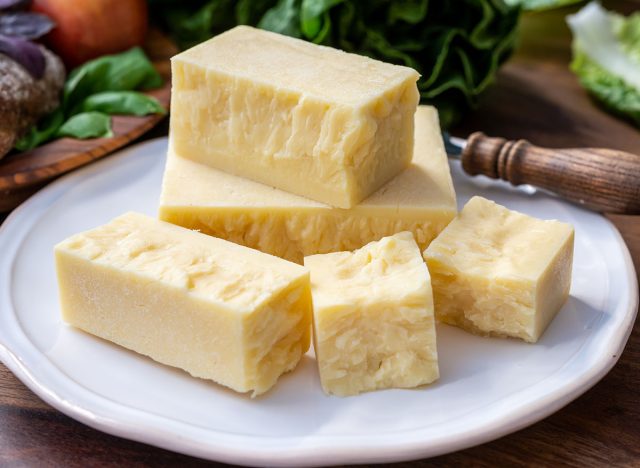
Adding cheddar cheese to your meal is a great way to add protein, says Collingwood. "Most cheeses are going to have about 7 grams of protein per ounce. Because the cheese has a fairly high-fat content, be aware of portion size so you don't end up with too many calories trying to reach your protein goals," she explains.
Whey or Protein Powder, Up to 50 Grams
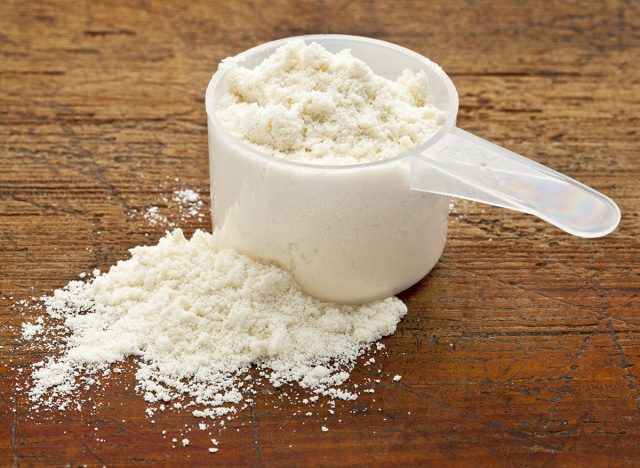
Whey protein powder "can vary from 12-50 grams depending on serving size and brand," says Collingwood. "Protein powder is an easy way to get a lot of protein. You can mix protein powder into a smoothie (or just combine with water, milk, or juice and stir/shake), or you can add to just about anything like oatmeal, yogurt, pancake mix, soups, casseroles, and more," she says.
RELATED: Tarah Schulte in 2-Piece Workout Gear Reveals How to Lose 20 Pounds in 4 Months with 9 Easy Habits
7 Ounces of Greek Yogurt, 20 Grams
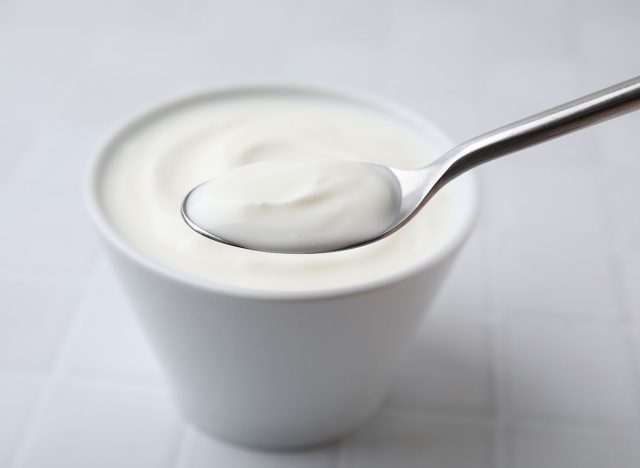
"Plain Greek yogurt doesn't have the added sugar but is a rich source of protein and a nice creamy and thick texture," says Collingwood. "Mix into smoothies, eat it plain with fruit and a sprinkle of granola, or replace mayo in dressings and sauces."
5.3 Ounces of Fruited Greek Yogurt, 12 Grams
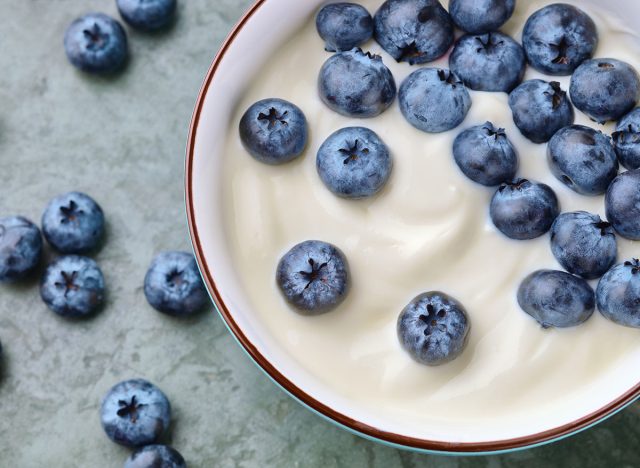
"With the fruit added to the Greek yogurt, some added sugar or non-nutritive sweetener usually comes with it, which boosts the calories compared to plain Greek yogurt," explains Collingwood. "An individual cup of Greek yogurt makes a great snack mid-morning or mid-afternoon!"
1 Cup Kefir, 9 Grams
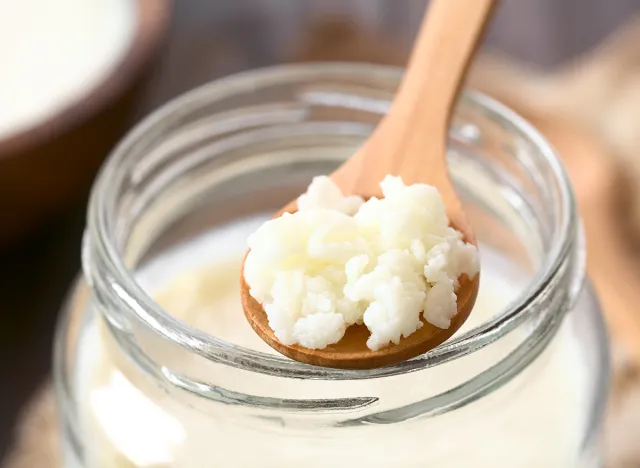
Kefir is also a great source of protein. "It is like a liquid yogurt with a tart and creamy taste," explains Collingwood. "It's high in probiotics, which are good for gut health and the immune system."
RELATED: Forget Xanax: This Natural Stress Hack Works in Seconds, Expert Says
1 Cup Milk, 8 Grams

Drink one cup of milk for lots of protein. "Good old fashioned cow's milk has a solid 8 grams of protein per cup and can be a standalone drink or, of course, in addition to cereal or smoothies or made into an energizing latte," she explains. "Milk is an excellent source of numerous vitamins and minerals including calcium, B12, phosphorus, and riboflavin."
1 Cup High Protein Milk, 13 Grams
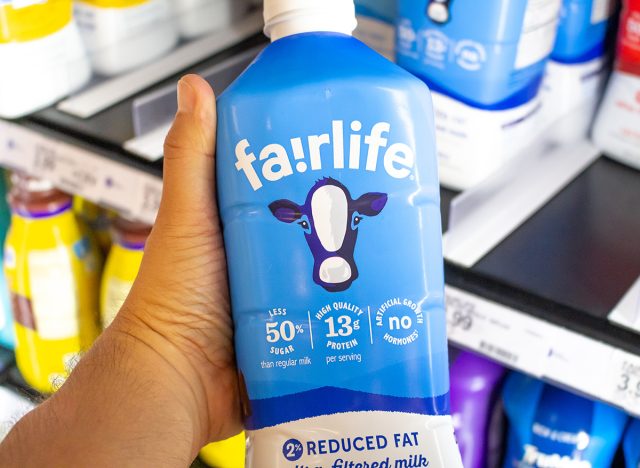
High-protein milk, like Fairlife, offers even more protein. "Certain brands of milk have an ultrafiltration process that provides a higher protein content than regular milk, which is a nice bonus if you're looking to maximize your protein intake. You are still getting all the nutritional benefits of cow's milk," she says.
Whey Protein Bars, Up to 28 Grams
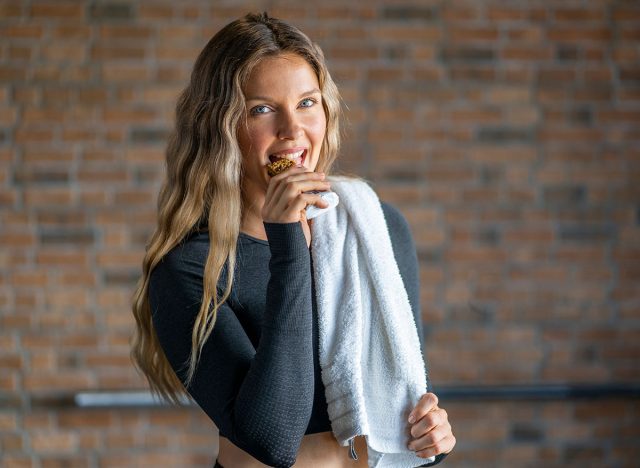
Whey protein nutrition bars can vary from 12-28 grams depending on the brand, explains Collingwood. "Protein bars made with whey protein are a great way to get a lot of protein in an easy to eat (and delicious) package. One of my faves is Built Bars, which have about 130-140 calories and 15-17 grams of protein per bar. Bars are easy to take on the go for a midday snack or even as a sweet treat after a meal instead of dessert."
RELATED: These 12 "Fountain of Youth" Foods Will Help You Look Younger
⅔ Cup High Protein Ice Cream
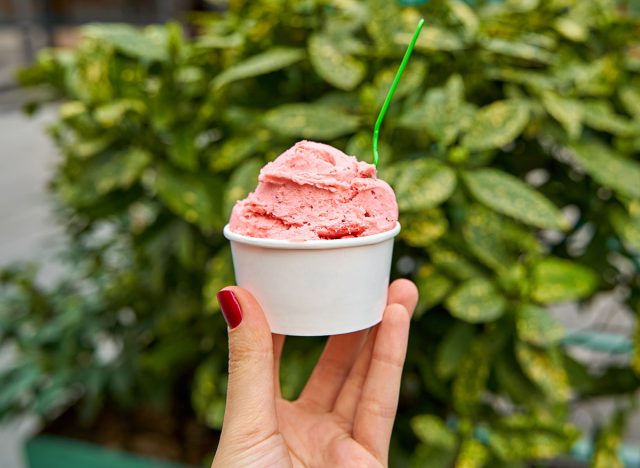
Want a protein-packed sweet treat? Eat high-protein ice cream (like Halo Top) with 7-8 grams of protein per serving. "Ice cream is indeed made from dairy, but most traditional ice creams contain more fat and sugar than protein. Certain brands like Halo Top, Enlightened, and Target's Favorite Day brand can have as much as 24 grams for the whole pint in under 350 calories," she says. And if you enjoyed this article, don't miss I'm a Nutritionist and Here Are 25 Weight Loss Truths You Need to Hear.




